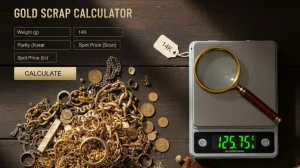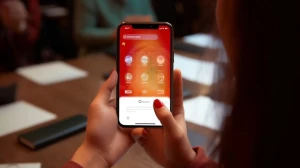
What Are Bitcoin ATMs? How do Bitcoin ATMs Work?
A Bitcoin ATM, or BTM, is an electronic kiosk, that allows users to buy and sell Bitcoin using cash or a debit card, while transactions are stored in a cryptocurrency wallet, offering privacy and accessibility but with high fees and potential risks.
by Sangamithra
Published Sep 08, 2023 | Updated Sep 08, 2023 | 📖 9 min read
On This Page
What Are Bitcoin ATMs?
A Bitcoin ATM, also known as a BTM, is an electronic kiosk designed for cryptocurrency transactions, particularly Bitcoin, distinct from traditional cash ATMs. These machines, operated by third-party companies like Bitcoin Depot and Coinme, offer users the ability to buy and sometimes sell Bitcoin using either cash or a debit card.
To use a Bitcoin ATM, individuals must have a cryptocurrency wallet where the purchased Bitcoin is stored, as it does not link to a bank account. These ATMs can be bidirectional, allowing users to both purchase and sell Bitcoin and can also facilitate Bitcoin transfers to others.
While they provide convenient access to cryptocurrency trading and offer privacy benefits, Bitcoin ATMs often charge high transaction fees, making it important for users to carefully consider the cost of their transactions and exercise caution against potential scams.
How Do Bitcoin ATMs Work?
Bitcoin ATMs, or Bitcoin Automated Teller Machines, function as electronic kiosks specifically designed for cryptocurrency transactions. Much like traditional ATMs, they allow users to perform financial operations, but instead of dispensing cash, Bitcoin ATMs facilitate the purchase and sometimes the sale of Bitcoin.
Operated by third-party companies, such as Bitcoin Depot and Coinme, these ATMs enable users to exchange traditional currency for Bitcoin by inserting cash or using a debit card. To complete the transaction, users need a cryptocurrency wallet, where the acquired Bitcoin is securely stored. Some Bitcoin ATMs are bidirectional, allowing users to both buy and sell Bitcoin, while others can be used to send Bitcoin to specific wallet addresses.
However, it's important to be mindful of the transaction fees, which can be notably higher than those on online cryptocurrency exchanges, and exercise caution due to the potential for scams and lack of regulatory protection in the cryptocurrency realm.
How to Use Bitcoin ATM?
To use a Bitcoin ATM, follow these steps:
Locate a Bitcoin ATM: Find a Bitcoin ATM near you using the Bitcoin website or a dedicated ATM locator service.
Prepare a Cryptocurrency Wallet: Before heading to the ATM, ensure you have a cryptocurrency wallet installed on your smartphone or a physical wallet card. This wallet will be used to store your Bitcoin.
Visit the ATM: Go to the Bitcoin ATM's physical location. They are often found in convenience stores, malls, or dedicated Bitcoin ATM locations.
Select "Buy Bitcoin": On the ATM screen, select the "Buy Bitcoin" option to initiate the purchase process.
Enter the Amount: Input the amount of cash you want to exchange for Bitcoin. The ATM will display the equivalent amount of Bitcoin you will receive based on the current market rate.
Scan Your Wallet QR Code: If you have a wallet with a QR code, scan it using the ATM's scanner. Alternatively, you can manually enter your wallet address.
Insert Cash: Insert the cash amount you specified earlier into the ATM's cash slot. Make sure to follow any specific instructions provided by the ATM.
Confirm Transaction: Review the transaction details on the screen, including the amount, fees, and Bitcoin address. Confirm that everything is correct.
Complete the Transaction: Once you're satisfied with the details, press the "Confirm" or "Buy" button on the ATM. The machine will process your transaction.
Receive Bitcoin: After the transaction is verified, you will receive the purchased Bitcoin in your cryptocurrency wallet. The transaction usually takes a few minutes to confirm.
Print Receipt (Optional): Some Bitcoin ATMs offer the option to print a receipt for your records. You can choose to print it if needed.
Remember that some Bitcoin ATMs may require identity verification, such as scanning an ID or providing a phone number, depending on the transaction amount and the operator's policies.
How Much Does Bitcoin ATM Charge for $1000?
The fees charged by Bitcoin ATMs for a $1000 transaction can vary based on factors such as the operator, location, and market conditions. Typically, these ATMs levy a percentage-based fee, ranging from 5% to 15% or even higher in some instances.
For instance, with a 10% fee, a $1000 transaction would incur a $100 fee, resulting in $900 worth of Bitcoin received. It's important to note that these figures are estimates, and actual fees may differ, so it's advisable to check the specific Bitcoin ATM you plan to use for precise fee information.
How to Send Money Through Bitcoin ATM?
Sending money through a Bitcoin ATM has become an increasingly popular way to transfer funds quickly, privately, and cost-effectively. Unlike traditional ATMs, Bitcoin ATMs, or BTMs, allow users to send and receive cryptocurrency, such as Bitcoin, with ease.
Step 1: Create a Bitcoin Account
To use a Bitcoin ATM, you'll need a Bitcoin account or wallet. Start by signing up with a reliable and trusted cryptocurrency exchange, which usually takes just a few minutes. This account will serve as your digital wallet for managing your Bitcoin.
Step 2: Find the Nearest Bitcoin ATM in Your Location
- Locating a Bitcoin ATM is made simple with tools like CoinATMRadar. This platform offers a comprehensive map of Bitcoin ATM locations worldwide, making it easy to find one near you. Just enter your geographical location, be it a city, state, or landmark, and you'll receive a list of nearby Bitcoin ATMs.
- CoinATMRadar also provides up-to-date information on Bitcoin prices, market statistics, transaction fees, and exchange rates, giving you a clear idea of what to expect during your transaction.
Step 3: Deposit Cash into the Bitcoin ATM
Once you've found a Bitcoin ATM near you, the next step is to deposit cash into the machine. This process is similar to using traditional fiat currency ATMs. However, keep in mind that Bitcoin ATMs often have deposit limits, typically ranging from $5 to $5,000 per day. If you encounter any issues during the transaction, don't hesitate to contact the support team for assistance.
Step 4: Enter the Wallet Address of the Recipient
The Bitcoin ATM will guide you on how to proceed and prompt you to enter the recipient's Bitcoin wallet address. Double-check the address to ensure it's accurate before hitting the send button. Once the transaction is complete, the recipient will receive the specified amount of Bitcoin tokens in their wallet.
Alternatively, the recipient can initiate a transaction using a two-way device by sharing their Bitcoin wallet's QR code. The sender can then scan the QR code to transfer Bitcoin to the provided address. The recipient can later withdraw the cash in fiat currency directly from the ATM.
How to Withdraw Money From Bitcoin ATM?
Bitcoin ATMs have made it easier than ever to access cash by using your cryptocurrency holdings. If you're looking to convert your Bitcoin into cash quickly and conveniently, you're in the right place. In this guide, we'll walk you through the step-by-step process of withdrawing money from a Bitcoin ATM:
Step 1 - Find Your Nearest Bitcoin ATM:
The first step is to locate a Bitcoin ATM near you that allows cash withdrawals. Ensure that you select the "Buy and Sell" filter to find ATMs that support cash withdrawals.
Step 2 - Choose Your Cryptocurrency:
At the Bitcoin ATM, you'll have the option to choose which cryptocurrency you want to exchange for cash. Typically, Bitcoin and Litecoin are the available options for cash withdrawal at ATMs. Make your selection and proceed to the next step.
Step 3 - Accept Terms and Conditions:
Review and accept the terms and conditions presented by the Bitcoin ATM. These terms are usually accessible online for your reference. Keep in mind that all transactions are final and non-refundable.
Step 4 - Select Your Cash Limit:
You'll be prompted to choose your cash withdrawal limit. Options often include "up to $900" or "more than $900." If your planned withdrawal is above $900, you may need to be a registered customer. You can either confirm your registration or opt to register at this stage.
Step 5 - Enter Your Phone Number:
Provide your phone number to receive a single-use password that's necessary to proceed with the transaction. You'll receive this password via text message.
Step 6 - Specify Withdrawal Amount:
After confirming your phone number and agreeing to the terms, you'll be asked to enter the amount of Bitcoin or Litecoin you wish to exchange for cash. Keep in mind that withdrawals are often available in increments of $50.
Step 7 - Scan the QR Code:
The Bitcoin ATM will generate a QR code receipt. Use your cryptocurrency wallet app on your smartphone to scan this QR code and send the exact amount of cryptocurrency to the provided wallet address.
Step 8 - Wait for Confirmation:
After sending the cryptocurrency, you'll need to wait for one confirmation on the blockchain. The time required for confirmation may vary depending on the cryptocurrency you're selling.
Step 9 - Withdraw Your Cash:
Once the blockchain confirms your transaction, you'll receive an automated text message notifying you that your funds are ready for withdrawal. Visit the Bitcoin ATM, scan the QR code on the receipt, and confirm your identity by entering your phone number. The ATM will then dispense your cash.
What Are the Benefits and Risks Associated With Bitcoin ATMs?
Benefits of Bitcoin ATMs:
- Bitcoin ATMs provide a straightforward way to buy and, in some cases, sell Bitcoin using cash or a debit card. They are accessible to anyone, even those without a bank account.
- Using Bitcoin ATMs often doesn't require sharing personal information, offering a degree of privacy for users.
- Some Bitcoin ATMs allow users to sell Bitcoin, providing a convenient option for converting cryptocurrency into cash.
Risks of Bitcoin ATMs:
- Bitcoin ATMs are known for charging high transaction fees, often ranging from 5% to 20%. These fees can significantly reduce the value of the cryptocurrency acquired.
- Typically, Bitcoin ATMs only support Bitcoin transactions. Users looking to buy or sell other cryptocurrencies will need to use online exchanges.
- Due to their decentralized and often anonymous nature, Bitcoin ATMs can be targeted by scammers and fraudsters. Users should exercise caution and only transact with trusted parties.
- Unlike bank accounts, Bitcoin and cryptocurrencies obtained through ATMs are not insured by the federal government. This means there is no recourse in case of theft or loss of funds.
What Are Bitcoin ATMs - FAQ
1. Are Bitcoin ATMs available worldwide?
Yes, Bitcoin ATMs can be found in many countries, providing access to cryptocurrency transactions globally.
2. What is the average transaction fee at a Bitcoin ATM?
Transaction fees at Bitcoin ATMs typically range from 5% to 20% of the total amount exchanged.
3. Do Bitcoin ATMs support other cryptocurrencies besides Bitcoin?
Generally, Bitcoin ATMs primarily support Bitcoin transactions, with limited options for other cryptocurrencies.
4. Are Bitcoin ATM transactions private?
Bitcoin ATM transactions offer a degree of privacy, as they often do not require users to share personal information.
5. Is my Bitcoin protected if I acquire it from a Bitcoin ATM?
No, Bitcoin obtained from ATMs is not insured by the government, unlike funds in a traditional bank account, leaving it vulnerable to theft or loss.




